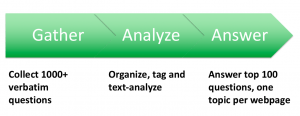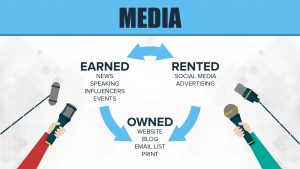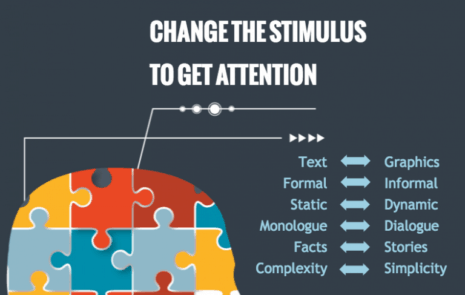
Top 100 Content Marketing Question: How do you decide the specific platform to deliver content?

3 ways to decide the specific platform to deliver content marketing
Use any of these approaches to build a platform to deliver content. Use all 3 approaches when you need to maximize results from content distribution.
1. Buyer persona research reveals information habits

The most effective way to decide the platform to deliver content marketing is by learning your buyers’ information habits through buyer persona research.
Ask buyers where they searched for the information they used to make a buying decision. Also ask which media or channels they did not use.
In searches for information, each type of buyer tends to go to the usual haunts they’re accustomed to. To build a platform to deliver content effectively, learn buyers’ habits.

For example, a civil engineer attends workshops to get continuing education credits, consults textbooks, uses certain websites, and talks to people who have never failed him. Content channels that reach him successfully include workshop sponsorships, textbook giveaways, and content placed on the specific websites he trusts.
Another example: a small business owner who needs a business loan looks at direct mail and email offers, searches the Better Business Bureau (BBB) website, and consults with family members. But he would never consult the other small business owners in his town – his peers – about a loan.

Why? Because he doesn’t want his peers to find out that he needs a loan. To reach him, direct mail, email and good BBB reviews work best.
Each type of buyer chooses different media to answer their questions. You gain advantage by finding out what buyers choose and why they choose it, so you can build a platform to deliver content effectively.
A small investment in buyer persona research can prevent lots of wasted spending in the wrong media channels. Instead, do the research to find out exactly where your audience goes for information.
Here’s more on how to perform buyer persona research.
If you don’t have the time or budget for buyer persona research, there are 2 additional options to consider.
2. Focus on buyers’ questions and topics
Search is a logical place to start looking for buyers, because it’s the center of a buyer’s online universe. Most consumers start their buying process on a search engine, usually on a mobile device.
Most website traffic referrals now come from search engines rather than from social media like Facebook, shows a study by Parse.ly.

Why? Because social media has evolved into a pay-to-play distribution channel.
Brands reach as few as 1% to 3% of their followers with organic social media. Today, you have to pay to reach your audience through social media.
Even if you don’t know where buyers are searching, it’s worthwhile to figure out what your buyers are searching for. Here’s how.
Gather all the questions your buyers ask when they go shopping.
Find out buyers’ questions by:
- Asking buyers in interviews
- Collecting questions from customer service, emails and chat
- Searching for questions on Google, Amazon and other websites
- Asking sales representatives and store employees.
Plug all your buyers’ questions into a spreadsheet and tag each by topic(s). Once you have 1,000 or more questions, do a text analysis to find out which questions are most important.

Then answer buyers’ top questions, one topic per webpage. This process helps you create great content that buyers are looking for and that search engines will point to.
How to convert buyers’ questions into compelling content?
Here’s a simple 3-step process.
Place answers to your buyers’ questions:
- Prominently on your website, bolstered with SEO
- Place in earned media, such as news stories
- In the media you know buyers use, but your competitors underserve
- Social media where you have the most organic engagement (by platform, day of the week and time of day)
- In paid media that have proven effective over time.
3. Build content on owned ground first
As you create content, first build in owned media, then in earned media, and finally in paid (rented) media:
- Owned content includes your website, and content for your blog, email and print subscribers.
- Earned media includes news coverage, speaking at events, content shared through influencers, and company-owned events.
- Paid (rented) media include advertising and paid social media.
Make sure all your earned and paid (rented) media point back to your owned content, like this:

The whole point of content marketing is for brands to create and serve their own audiences with the best content available. How?
In addition to organic distribution, borrow other people’s audiences through earned and paid media.
Then offer valuable information to convert buyers into subscribers of your owned media.
Once you’ve found your buyers, build your content franchise by delivering great content consistently on one main platform over a long period of time.
To successfully grow your owned media audience over time, stay in tune with what audiences need and where they go.
After you build out your main platform, add other media channels. Meticulously measure how other media help you gain subscribers and convert those subscribers into customers.
Taking this approach gives you a solid process for how to decide the specific platform to deliver content.
Good decisions about the specific platform to deliver your content marketing put you on the road to success in content marketing. Use all 3 of these approaches for the best results.





